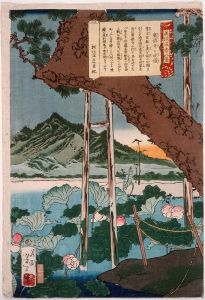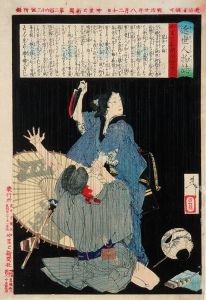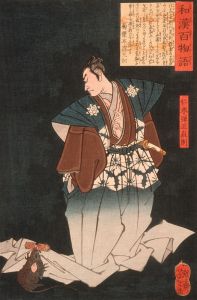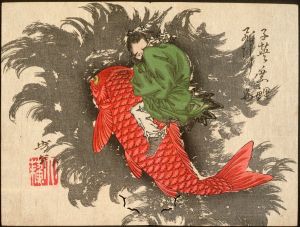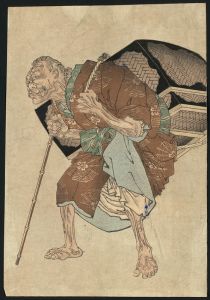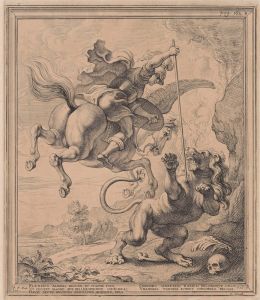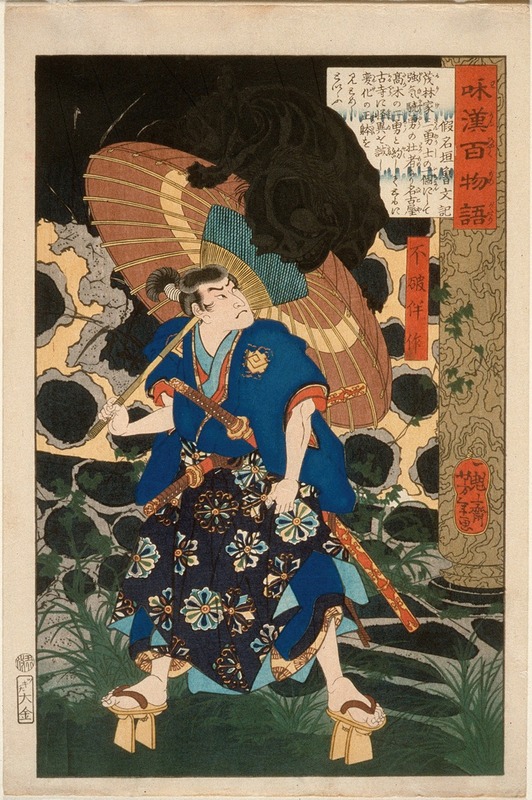
Fuwa Bansaku and the Monster
A hand-painted replica of Tsukioka Yoshitoshi’s masterpiece Fuwa Bansaku and the Monster, meticulously crafted by professional artists to capture the true essence of the original. Each piece is created with museum-quality canvas and rare mineral pigments, carefully painted by experienced artists with delicate brushstrokes and rich, layered colors to perfectly recreate the texture of the original artwork. Unlike machine-printed reproductions, this hand-painted version brings the painting to life, infused with the artist’s emotions and skill in every stroke. Whether for personal collection or home decoration, it instantly elevates the artistic atmosphere of any space.
"Fuwa Bansaku and the Monster" is a woodblock print created by the renowned Japanese artist Tsukioka Yoshitoshi, who lived from 1839 to 1892. Yoshitoshi is celebrated for his innovative approach to the traditional ukiyo-e art form, and he is often credited with revitalizing the genre during a time when it was in decline. His works are known for their dynamic compositions, vivid use of color, and often dramatic or supernatural themes.
This particular print, "Fuwa Bansaku and the Monster," is part of Yoshitoshi's series "New Forms of Thirty-Six Ghosts" (Shinkei Sanjūrokkaisen), which was published between 1889 and 1892. The series is notable for its exploration of ghost stories and supernatural folklore from Japanese culture, a subject that fascinated Yoshitoshi and was popular among the public during the Meiji period.
The print depicts Fuwa Bansaku, a character from Japanese folklore, in a dramatic encounter with a monstrous creature. Fuwa Bansaku is often portrayed as a brave and skilled warrior, and his confrontation with the monster is emblematic of the themes of courage and the supernatural that permeate Yoshitoshi's ghost series. The image captures a moment of tension and action, with Bansaku poised to confront the beast, showcasing Yoshitoshi's skill in conveying movement and emotion through his art.
Yoshitoshi's work is characterized by its attention to detail and the use of vibrant colors, which are evident in this print. The artist employed traditional woodblock printing techniques, but he also incorporated new methods and influences, reflecting the changing artistic landscape of Japan during the late 19th century. His ability to blend traditional and modern elements is one reason why his work remains highly regarded today.
"Fuwa Bansaku and the Monster" exemplifies Yoshitoshi's interest in the supernatural and his ability to bring these stories to life through his art. The print not only serves as a visual representation of a popular folk tale but also as a testament to Yoshitoshi's mastery of the ukiyo-e form. His work continues to be studied and appreciated for its artistic merit and its insight into the cultural and historical context of the Meiji era.
Yoshitoshi's influence extends beyond his lifetime, as his prints have inspired both Japanese and Western artists. His exploration of themes such as heroism, fear, and the supernatural resonates with audiences even today, making his work a significant part of the global appreciation for Japanese art and folklore.





